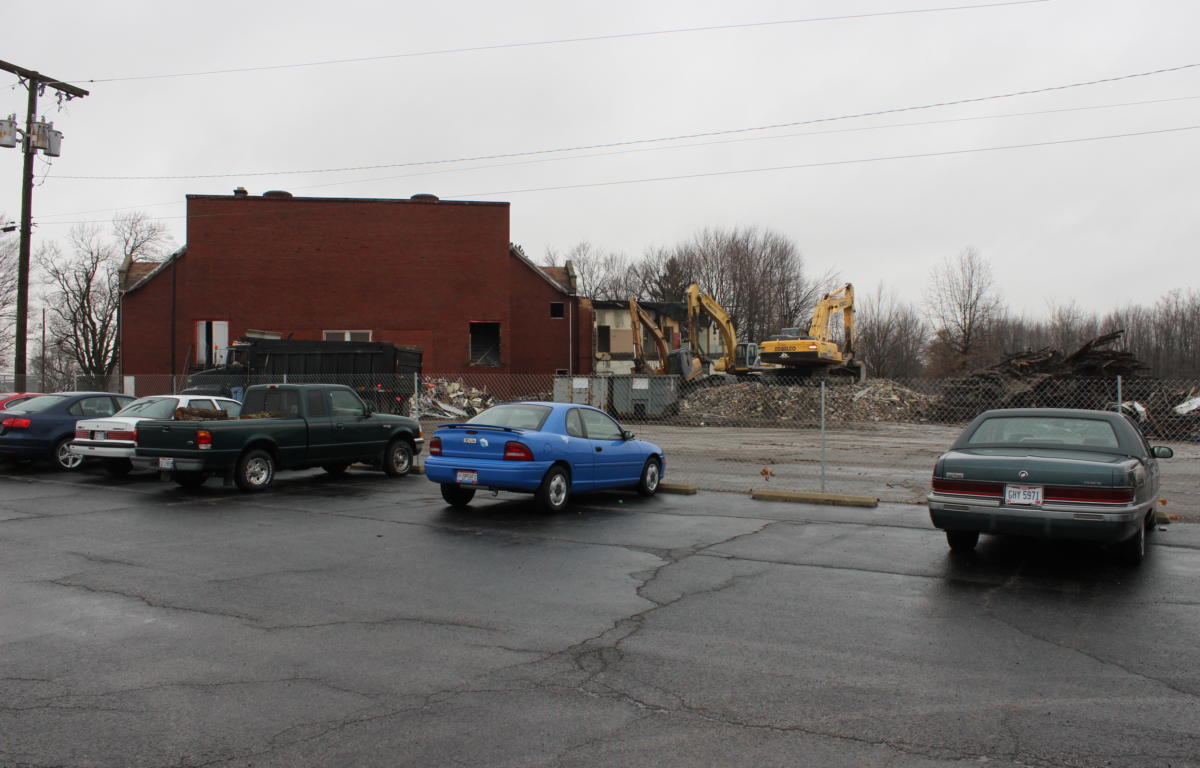By Bob Strohm
bstrohm@wbcowqel.com
It was the beginning of the end for the old North Robinson School building Tuesday, as workers began dismantling the old school house.
On Tuesday morning crews from Russ James Contracting out of Zanesville began the demolition of the last of Colonel Crawford’s old elementary and junior high school buildings.
 First opened in 1922 as a grades 1 through 12 school for the village of North Robinson and rural surroundings, the building had two add-ons to the original building to provide more space for a growing number of students. When consolidated with Leesville, Sulphur Springs and Whetstone the building then housed the junior high from the 1960s onward until the early 1980s when the sixth grade class was added into the school building’s halls. The building functioned as a 6 through 8 grades building until 2006 when the William and Hannah Crawford School building opened.
First opened in 1922 as a grades 1 through 12 school for the village of North Robinson and rural surroundings, the building had two add-ons to the original building to provide more space for a growing number of students. When consolidated with Leesville, Sulphur Springs and Whetstone the building then housed the junior high from the 1960s onward until the early 1980s when the sixth grade class was added into the school building’s halls. The building functioned as a 6 through 8 grades building until 2006 when the William and Hannah Crawford School building opened.
Superintendent Todd Martin gave an update on the demolition project that also saw the demolition of Colonel Crawford School buildings in Whetstone Township and Sulphur Springs.
“This building is the last of the complete tear downs, and they are hoping to have this building by the end of this week, early next week from that point on removal of scrap materials, brick, block, and all those type things,” Martin said. “All the projects will come to completion in the spring when they get the topsoil laid and seeded.”
Abatement on the high school is scheduled to begin in October of 2015 when the new Colonel Crawford High School wing will open.
While the buildings will no longer remain, memories from the buildings will carry onward as pieces of each of the school buildings are going to be displayed in the William and Hannah School building.
Former superintendent for Colonel Crawford Ted Bruner reflected on his memories from North Robinson building.
“As it goes down piece by piece you have memories of what happened in the different parts building. When I think of the North Robinson, I was principal there for a number of years, but I took over for an unbelievable gentleman, John Roseberry,” Bruner said. “When he retired I took over for him, and he was a great man who had set a standard, developed the faculty, had done so many things to develop that building, and I was just fortunate to take over for him after I had been a teacher for him for years. It’s those kinds of things you think about. It isn’t sad, but it is a great memory.”
As Bruner looked over the plaque dedicated to North Robinson students who served during World War II that hung in the North Robinson building, and in particular a former Colonel Crawford student who paid the ultimate price.
“This was an agricultural community with not much industry so many worked farms. Royce Sipes, who went to North Robinson school, used to sing into a milk can in the morning when he was milking cows. While he was on leave during World War II he recorded in New York, however he was lost when a glider bomb hit his gun placement in the U.S.S. Plunkett during the battle of Anzio,” Bruner said. “There were four trees planted in memory of students who had lost their lives during World War II, and when three of them were dying we had them cut down, and new trees planted in their memory. While doing the research I got to learn about these men, and their stories.”


